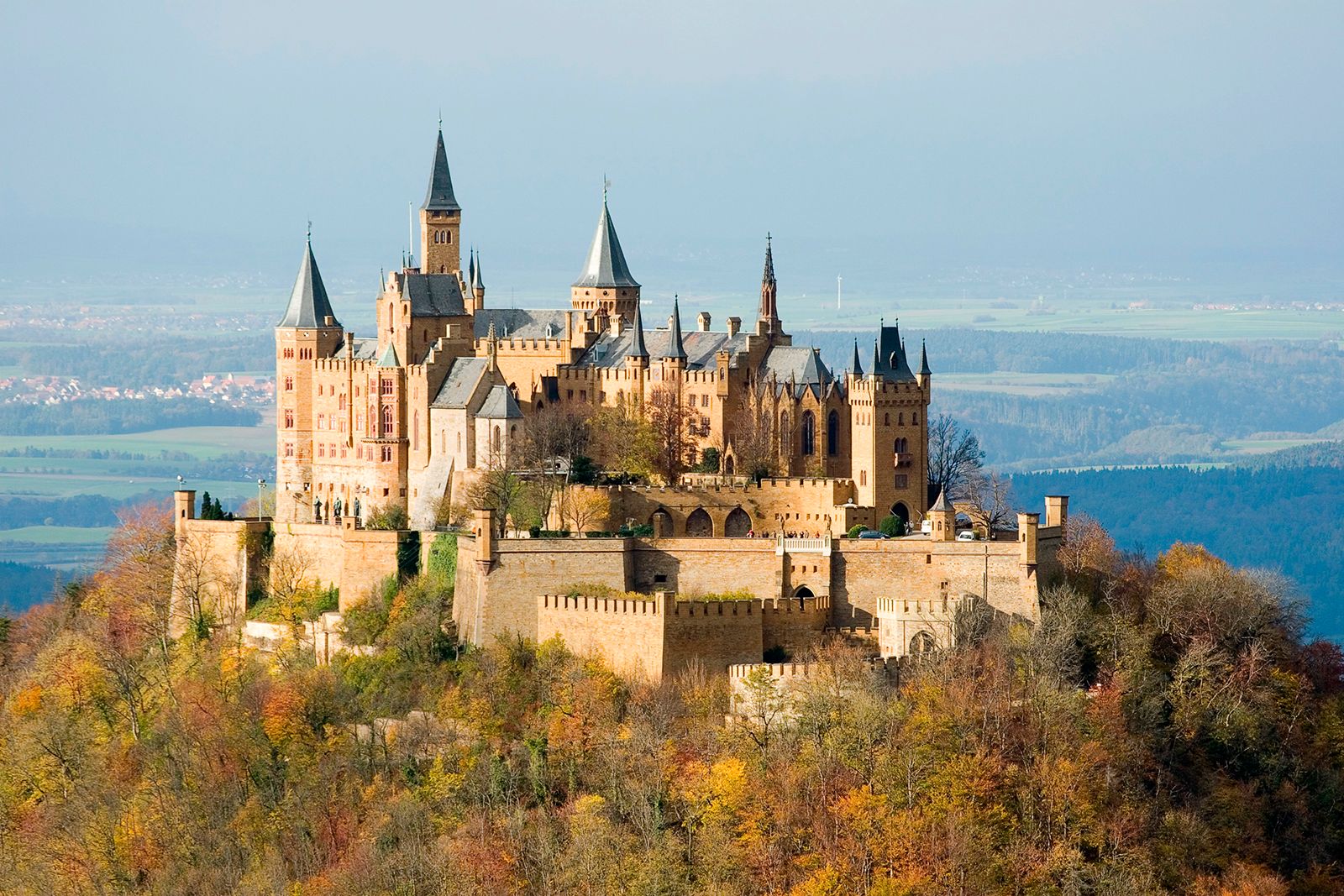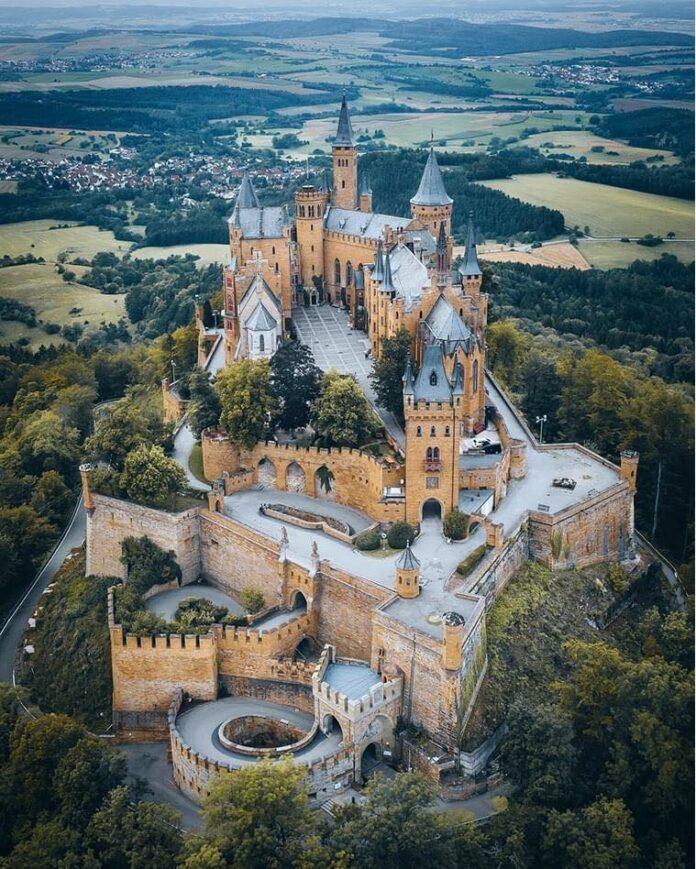Perched high atop Mount Hohenzollern in the Swabian Jura of Baden-Württemberg, Germany, Hohenzollern Castle stands as a striking symbol of German history and architectural grandeur. As the ancestral seat of the House of Hohenzollern, this castle has witnessed centuries of change and development, reflecting the rich heritage of its noble lineage. From its origins in the early 11th century to its present-day status as a major tourist attraction, Hohenzollern Castle offers a fascinating glimpse into the past.
The Origins and Evolution of Hohenzollern Castle

Early Foundations
The history of Hohenzollern Castle begins in the early 11th century with the construction of the first castle on the site. Originally built by the Counts of Zollern, it was a significant fortification in the region. However, this initial structure was completely destroyed in 1423 following a prolonged siege by the Swabian League of Cities.
The Second Castle
A new, more robust castle was erected between 1454 and 1461. This fortress provided refuge to the Catholic Swabian Hohenzollerns during turbulent times, including the Thirty Years’ War. Despite its strategic importance, by the late 18th century, the castle was deemed obsolete and fell into disrepair. Several buildings were demolished, and by the early 19th century, only the Chapel of St. Michael remained in use.
The Third Castle: A Gothic Revival Masterpiece

The current incarnation of Hohenzollern Castle was constructed between 1846 and 1867. Commissioned by King Frederick William IV of Prussia, the castle was designed as a family memorial and a symbol of Prussian heritage. Architect Friedrich August Stüler, influenced by English Gothic Revival architecture and the Châteaux of the Loire Valley, crafted a design that blends medieval romance with 19th-century artistic sensibilities. The construction, funded by the Brandenburg-Prussian and Hohenzollern-Sigmaringen branches of the family, was completed under Frederick William IV’s brother, King William I.
Architectural Splendor

Military Architecture
The entrance to Hohenzollern Castle is marked by the Eagle Gate (German: Adlertor) and its drawbridge, leading into a complex defensive structure. The castle’s winding zwinger, a defensive ring, curves four times before reaching the bastions, offering a formidable protective barrier. This intricate design highlights the castle’s military prowess.
Palatial Buildings
At the heart of the castle is the palace itself, which sits on the foundations of the second castle. Designed in a U-shape, it integrates both Protestant and Catholic chapels and showcases Stüler’s Gothic Revival style. The palace features four main towers aligned with the bastions: the Emperor’s Tower, Bishop’s Tower, Markgraf Tower, and Michael’s Tower. Each tower is connected to the castle’s defensive structure and adds to the overall grandeur of the design. The Count’s Hall, part of the main residential area, is adjoined by the Watch Tower (German: Wartturm), which serves as a staircase and a flagpole when the Hohenzollern family is in residence.
Modern Significance

Today, Hohenzollern Castle is a prominent tourist destination, attracting over 350,000 visitors annually. The castle, still privately owned by the House of Hohenzollern, is shared between the Brandenburg-Prussian and Swabian branches. The Princess Kira of Prussia Foundation uses the castle for an annual summer camp for children. In addition to its role as a historical landmark, the castle has featured in popular culture, including its appearance in the 2016 thriller-horror film A Cure for Wellness and the 2017 TV adaptation of The Worst Witch.
Conclusion
Hohenzollern Castle is more than just an architectural marvel; it is a testament to the enduring legacy of the House of Hohenzollern and its role in German history. From its medieval origins to its 19th-century revival, the castle embodies the rich tapestry of events and personalities that have shaped its storied past. As a cultural and historical monument, it continues to captivate and inspire visitors from around the world, preserving the grandeur of a bygone era for future generations to appreciate.
